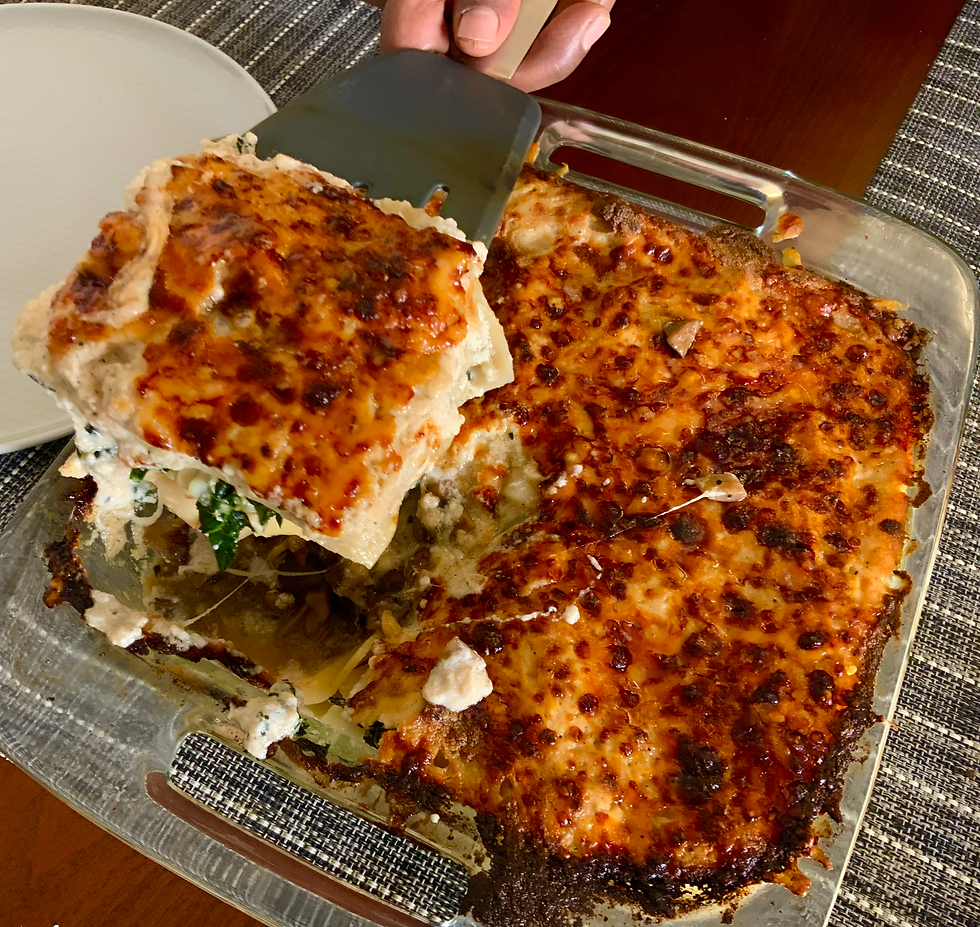Rice pongal (Ven pongal)
- kzafarullah

- Jun 3, 2022
- 3 min read
Updated: Apr 2, 2025
Pongal literally means "to bubble over or to overflow." This dish is made during the festival of Pongal (also celebrated in other parts of India as Makar Sankranti, Lohri, or Bhogi). It signifies the transition of the sun to the North and the crucial season for harvest. The overflowing pot of rice invokes the gods for an abundance of crops. The festival of Pongal is a celebration in Tamil Nadu, a southern state in India. More on this festival here.
The dish Pongal also belongs to a family of foods called temple cuisine. Based on Hindu mythology, the Lord Vishnu set out on a long pilgrimage and was given food at various temples across the land. He was also fed by his consort, Goddess Lakshmi, who prepared the dishes specifically for him. These foods, which are always vegetarian, are now called temple foods. This mythology has led the temples across India to have massive kitchens, feeding 100,000 people every day for free. For example, the Jagannath Temple feeds 25,00 people daily from a menu of 56 items: 40 vegetables and lentils, six rice, and 10 sweets. This number swells to over 1 million during festival season. Temple cuisine is always cooked by master chefs called Maharajas or Khanshamas, a profession passed down, along with the recipes, within families. Although modern restaurants can replicate a single dish, maybe the replication of temple cuisine, even by professionally trained chefs, has failed, the primary rationale being the secret recipes and the ability to cook for the "gods". Here is a lovely article on Temple cuisine.
This Pongal recipe is absolutely divine. The soft rice and lentils have the perfect chewy texture from the roasted coconut, and roasting them at the start brings out the grains' depth of flavour. The subtle spices add nuances of soft flavours, and the abundance of Tellicherry peppercorns adds that pop of spice. This is a pongal that you will not be able to stop eating.
This is, again, one of the first cookbooks I bought about 30 years ago. I craved good South Indian cuisine when I moved to Philadelphia for my degree. We have cooked through most of the recipes in this cookbook, each one delicious, it helped us remember our lives in India while we assimilated in the US. This cookbook is always the first to come out when we crave this cuisine, and of course, it led me to get every other cookbook written by Chandra Padmanabhan.
For more recipes from this cookbook, click here.


Ingredients:
2 tablespoons roasted cashew nuts
1 teaspoon ghee
1 cup long-grain rice
1/2 cup green gram dal (split mung dal)
1/2 teaspoon turmeric
3 1/2 cups water
1 cup milk
Salt, to taste
4 tablespoons ghee
A generous pinch of asafoetida
20 black peppercorns, preferably Tellicherry
1/2 tablespoon ginger paste
10-12 curry leaves
1 teaspoon cumin powder
1 tablespoon grated fresh coconut, lightly roasted on a dry pan
Add the teaspoon of ghee to a frying pan and toast the cashew nuts, coating them well with the ghee on a very low flame. Be careful, as the cashew nuts burn very quickly. Set aside.
In a heavy frying pan, dry roast the rice and mung dal separately until they are lightly coloured and aromatic. Add them to a pot and rinse in 3 changes of water. Add the water and milk to the beans and rice, add the turmeric, and bring to a gentle simmer. Cook on a low flame carefully; the milk may tend to boil over till the rice is cooked and has started to break down and the dal is cooked through, for about 40 minutes. Check after 30 minutes that there is enough water and add 1/4 cup more if needed. When the rice is cooked, it should have a thick porridge-like consistency, clinging heavily to a spoon. Add salt and taste.
NOTE: If the pongal is made ahead of time, it thickens. Add water to bring it back to the desired consistency.
Ladle the hot pongal into a deep bowl. Heat the extra ghee in a very small pot and add the asafoetida, black peppercorns, ginger, curry leaves and cumin powder in order. Fry till the ginger is cooked and aromatic. Pour over the Pongal and finish with the garnish of fried cashew nuts and roasted coconut. Serve immediately and mix in the temper at the table.














